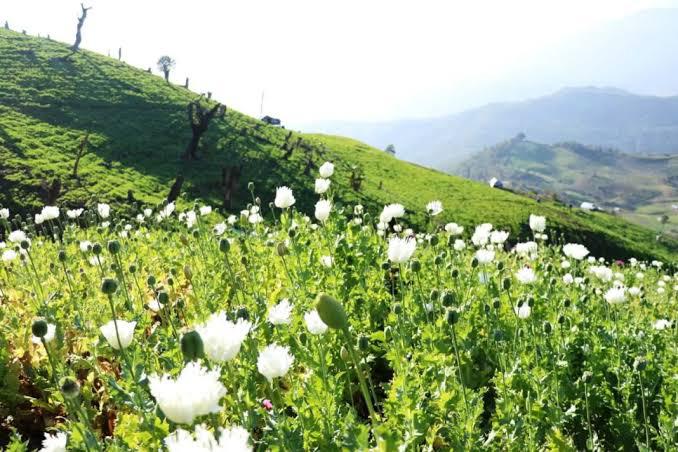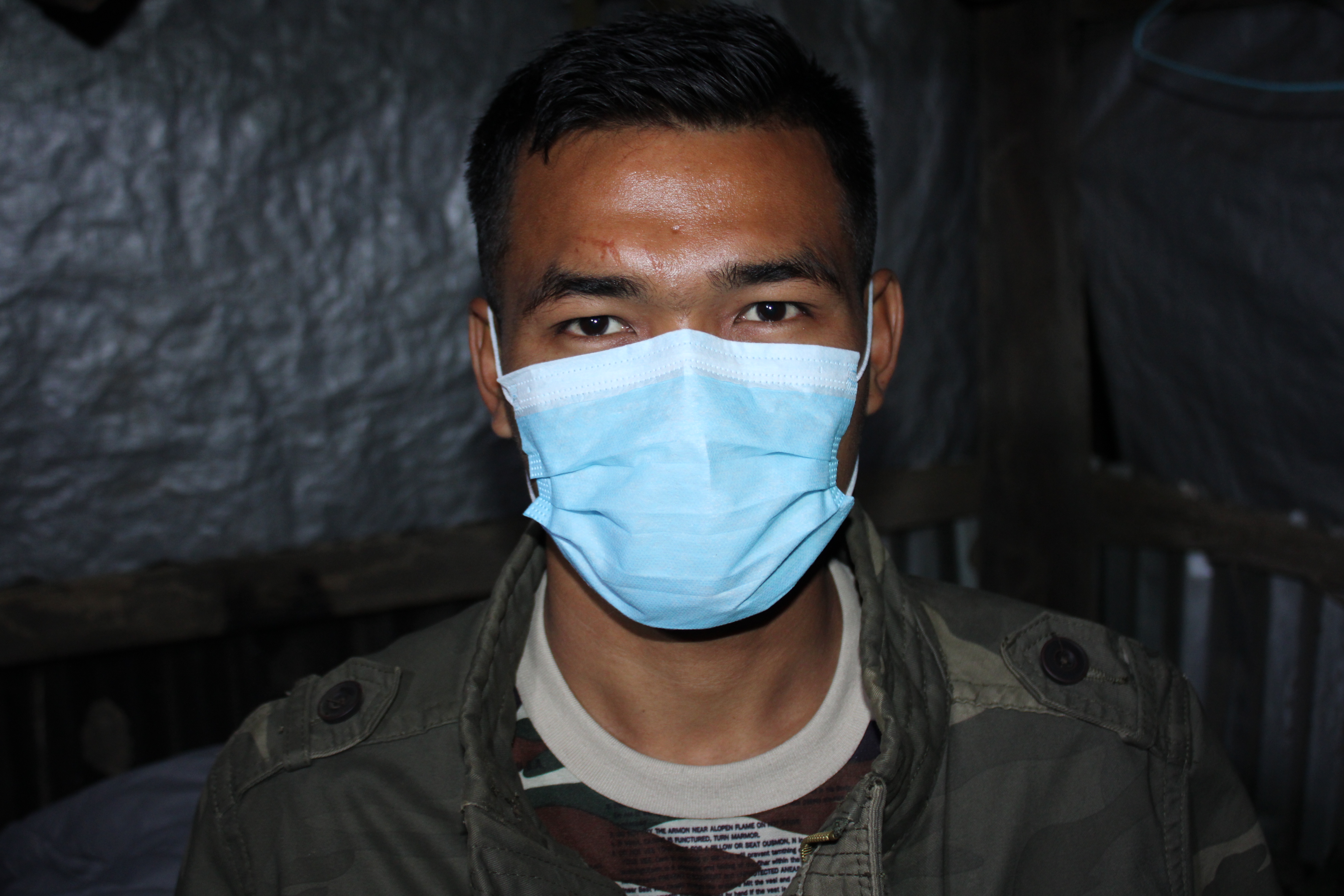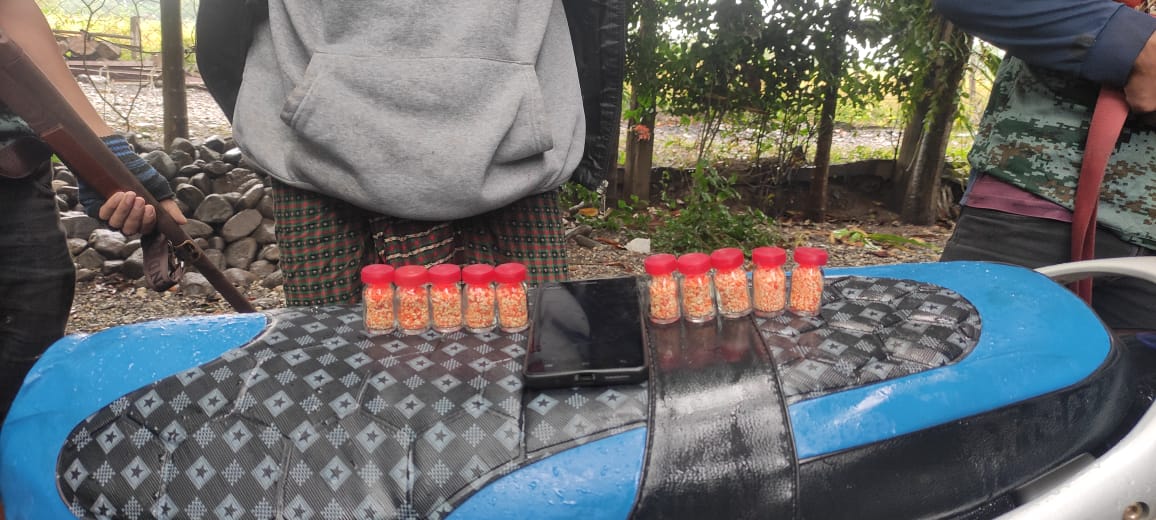Among the many lethal consequences of the February 2021 military coup in Myanmar is the increasing availability of different varieties of drugs, both within the country and as exports to overseas destinations.
The drugs that are manufactured and trafficked are mostly heroin and amphetamine-type stimulants (ATS) such as Yaba and “World is Yours,” which are known by a variety of names in different localities.
Whether this is the outcome of a surge in the production of drugs in Myanmar after the coup — as mentioned in a recent report of the United Nations Office On Drugs And Crime (UNODC) — remains a matter of speculation. What is evident is the continuing flow of drugs from laboratories in Myanmar and the active involvement of multiple stakeholders, including a section of the regime’s military officers, in the lucrative and illicit business.
During my travels in Myanmar’s Chin State and Sagaing Region between January and March, I met a cross-section of people, including former army personnel who left their jobs to participate in the anti-junta resistance. They, along with resistance fighters, participants in the Civil Disobedience Movement, and refugees who are taking shelter in India, confirmed allegations of direct and indirect linkages between the junta regime and the narcotics trade.
Sinking Economy Spurs Opium Cultivation

Opium cultivation in Manipur. Photo courtesy of ICSSR researchers.
After a decade of stable growth, Myanmar’s economy shrank by 18 percent in 2021, and grew just 3 percent in 2022. One of the major issues facing the country’s economy is the devaluation of its currency, the kyat, whose value has almost halved, resulting in 16 percent inflation.
Among the consequences of the economic slowdown in the country has been a shift to the cultivation of poppy, a key ingredient in the production of heroin. “In 2022, the area under opium poppy cultivation in Myanmar was estimated at 40,100 (29,000 to 62,900) hectares. This estimate is 33 percent greater, or about 10,000 more hectares than in 2021, reversing the downward trend that started in 2014. The evidence collected in 2022 points towards increasing sophistication in poppy cultivation practices,” the UNODC report said.
Functionaries of the Chin National Army, Kalay People Defense’s Force (PDF), and refugees in the Indian state of Mizoram confirmed references in the UNODC report to poppy cultivation in the mountains north of Tonzang in Chin State near the border with India. They pointed out that poverty compelled the farmers to grow opium in Chin State and other regions in the country.
Besides Chin State, some areas in the contiguous Sagaing Region along the border with India in the state of Manipur have witnessed a spurt in poppy cultivation. A recent paper titled “Rise of Alternative Agriculture: The Case of Poppy Cultivation,” authored by Ch. Priyoranjan Singh, Homen Thangjam, and H. Isworchandra Sharma from Manipur, argued that poverty and lack of alternatives have led farmers to cultivate poppies along the state’s border with Myanmar in collaboration with investors, including a section of militants.
The paper, which was submitted to the Indian Council of Social Science Research (ICSSR) last year, quoted intelligence reports as saying that the poppy crop is sent to laboratories in Myanmar, among other destinations.
Production and Trafficking
Activists of the resistance movement accuse a few rebel outfits and militias (Pyu Saw Htee), who are allies of the military regime, of involvement in ferrying opium to the laboratories that manufacture the drugs and then trafficking the drugs to multiple destinations.
At Tonzang, the Zomi Revolutionary Army-Eastern Command (ZRA-EC) is alleged to be involved in the cultivation and transportation of opium to the laboratories in Shan State. The ZRA-EC has clashed with anti-junta organizations in Myanmar.
Pu Vela, a founder member of Kalay PDF, said, “In Chin State, cultivation of poppy has increased by 40 percent. ZRA is involved in cultivation at Tonzang with the assistance of the junta.”
Pu Vela’s allegations could not be independently verified, but what he said about the involvement of the ZRA with opium cultivation was echoed by a senior Indian government official tasked to check drug trafficking in the country’s Northeast. The ZRA has a branch that is active in Manipur’s Churachandpur district, which is one of the areas where opium is grown.
Shan State continues to be the epicenter in the Golden Triangle for the production of Heroin and ATS. This trend originated many decades before the 2021 coup.
As in the past, Shan State grows opium and also receives the commodity from other regions of Myanmar for conversion to heroin. An army deserter in Tamu associated as a trainer with some PDFs in Sagaing Region claimed that the Restoration Council of Shan State (RCSS) was one of the leading manufacturers of heroin and ATS in the country. The RCSS is one of the seven ethnic armed organizations (EAOs) that signed the Nationwide Ceasefire Agreement with the Myanmar government in 2015. Unlike some EAOs, it is not engaged in a conflict against the military regime.
“There was a link between RCSS and the infamous drug lord Khun Sa, who is now dead, and his erstwhile outfit known as Mong Tai Army. So RCSS’ involvement in drugs is not surprising. It has a cordial relationship with the junta, which means that the regime is indirectly involved,” the army deserter told me at Tamu on March 24, adding that “RCSS is one among many manufacturers of drugs in Shan State.”
From Shan State, the consignments are trafficked to different destinations through multiple routes that crisscross the country. Efforts made by the previous government of the National League for Democracy (NLD) to check trafficking through enhanced surveillance seem to have been abandoned after the coup.
“Before the coup, the NLD government had installed sophisticated X-ray scanners to detect drug consignments at three highways believed to be the main arteries for ferrying drugs. On one occasion, drug barons attacked one of the X-ray scanners because it impeded the illicit trade. Since the coup, the scanners are used to detect weapons for the resistance groups and not drugs,” said Han Thar Oo, chief of the north Kalay police station, which has been established by the resistance movement and recognized by the National Unity Government (NUG).
The police chief’s views were shared by Thang Sei, a Member of Parliament from Tamu in the Sagaing Region. He explained, “Transportation of opium cannot take place without the cooperation of the military. Confessions of some traffickers apprehended by the PDFs establish their links to the junta.”
“I Ferried Drugs for a Captain”

CNDF Commander Lal Thang Mawia. Photo by Rajeev Bhattacharyya.
Lai Thang Mawia is the commander of the Chin National Defense Force (CNDF) at the Sapdin Camp in Kalay. Before joining the CNDF in 2021, he had served in the army as a driver for two years but decided to leave prior to the coup. “The coup was not the reason for me leaving the job. I wanted to be a boxer. Moreover, I was also very frustrated with the conduct of some army officers,” Lai Thang Mawia told me in an interview at Kalay on January 25.
Lai Thang Mawia explained he was upset when a captain asked him to ferry drugs in a vehicle to Rakhine State in western Myanmar. Narrating the details of the journey, he said that the consignment, comprising about 20 small packets, was hidden in the bonnet and beneath the seats of the vehicle he was driving. “I think the packets contained Heroin No 4. It was a long journey of over three days through hilly terrain in Chin State. There was no risk anywhere because there was no checking at that time. And army vehicles were never stopped anywhere,” he said.
Lai Thang Mawia delivered the packets to a middle-aged trader at a secluded spot in Rakhine State near Paletwa. After his return to the army battalion at Kalay, the captain hinted that he would have to carry more drugs to a different location. But Lai Thang Mawia fled from the center two weeks after returning from Rakhine State. He firmly believed that several other officers in the army like the captain were actively involved in trafficking.
Kapte Nginzakap was a sergeant in the army before he joined the north Kalay police station run by the NUG as a volunteer and has been tasked to crack down on drug trafficking. He told The Diplomat that some army officers in Kalay had cultivated “intimate links” with drug merchants and were involved in trafficking.
New Heroin and New Markets

The new variant of heroin (white and red) seized last year by North Kalay Police in Myanmar. Photo courtesy of North Kalay Police.
While the ATS available in the market remains the same, new varieties of heroin, whose quality and price differ from the earlier variant, have hit the market since the coup. Heroin confiscated from traffickers at Kalay and in the Indian border states of Mizoram and Nagaland is a “mixture of white and red” rather than the traditional white, according to police officers and resistance fighters.
On May 26, a drug trafficker hacked to death a student leader at Tizit in Nagaland, during a surprise check that students conducted on his residence. The drug trafficker was known to sell heroin from Myanmar called “Sunflower” (or “Shan Flower”), which is cheaper than what was previously available and is white and red in color.
“White and red” heroin has been seized by police in north Kalay and the PDFs at Tamu.
The reasons for the new variant are not known, although some resistance fighters at Tamu and Kalay believe that new and cheaper ingredients used for manufacturing heroin may be behind the color change and drop in price. A common refrain one hears in the region is that tranquilizer used for horses is being used to churn out cheaper drugs.
Most of the traffickers at Kalay and Tamu are young adults and include a few women. In most cases, the traffickers are addicts who are compelled to sell drugs for money. They are linked to agents who sourced consignments from Shan State.
Alongside the new variant of heroin are the continuing flows of the older white variety and the ATS, which are being confiscated at regular intervals in India’s Northeast. In Mizoram alone, heroin worth an estimated 2.71 billion rupees (approximately $33 million) has been seized by law enforcement agencies since January. Data shared by the Assam Rifles reveal that a total of 12,12,350 tablets of “World Is Yours” from Myanmar were seized in India’s Northeast last year, which was in addition to Yaba, opium, and Brown Sugar.
The reason for the unceasing flow into India’s Northeast is the market that lies beyond the frontier region — the Indian mainland and overseas destinations. Some consignments are smuggled out to Bangladesh through other border states of the region such as Assam and Tripura, while others are routed to the bigger cities of India. It is presumed that the drug barons have focused their attention on India after a clampdown by the government in Thailand along the country’s border with Myanmar.
“The dynamics of trafficking from Myanmar to foreign destinations have changed. The arteries that ensured a smooth flow of drugs to Thailand have been choked to a great extent due to a crackdown in the country. So, the drug barons, and their allies in the junta, are focusing on markets in India and Islamic countries,” Dr. Sui Khar, vice chairman of Chin National Front (CNF), said.
Myanmar Junta’s Drug Trafficking Links
Source: Frappler

0 Comments